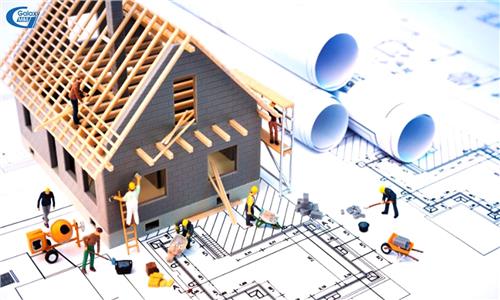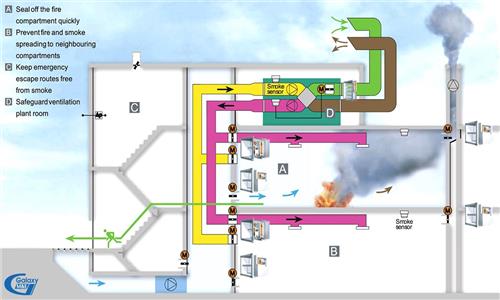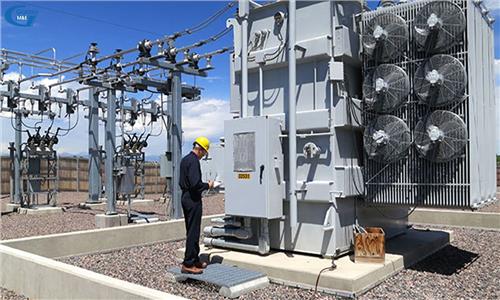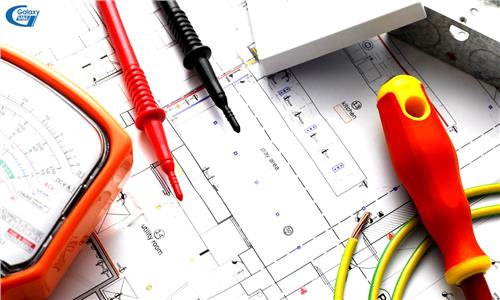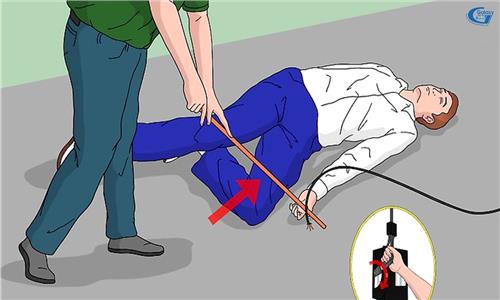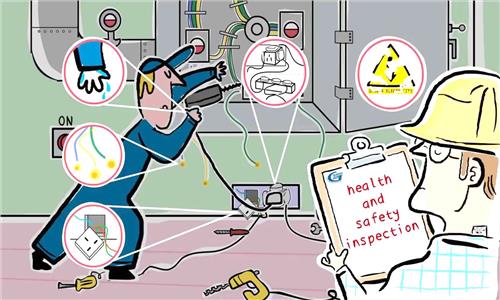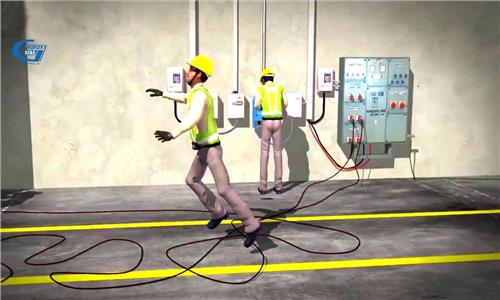Cable ladder and cable trunking for m&e works | Galaxy M&E
As a M&E contractor, Galaxy M&E understands the importance of building cable trays for M&E works.
In each M&E construction, the most important items of the heavy electrical system to be constructed are pipes, protective cable trays and installation of electric wires / cables. Today, this system is a must for the investors and contractors involved in the construction of works.
As a M&E contractor, Galaxy M&E understands the importance of building cable trays for each project. This ensures activities to run smoothly, safely and makes sure the electromechanical system operates correctly. However, choosing the appropriate type of cable tray ladder is not easy for many investors. The cost of investing in cable tray system depend on, quality, safety, material, quantity and the type of materials used..
To assist customers in selecting the appropriate cable ladder system, the following article will provide basic information about cable ladder system in M&E works.
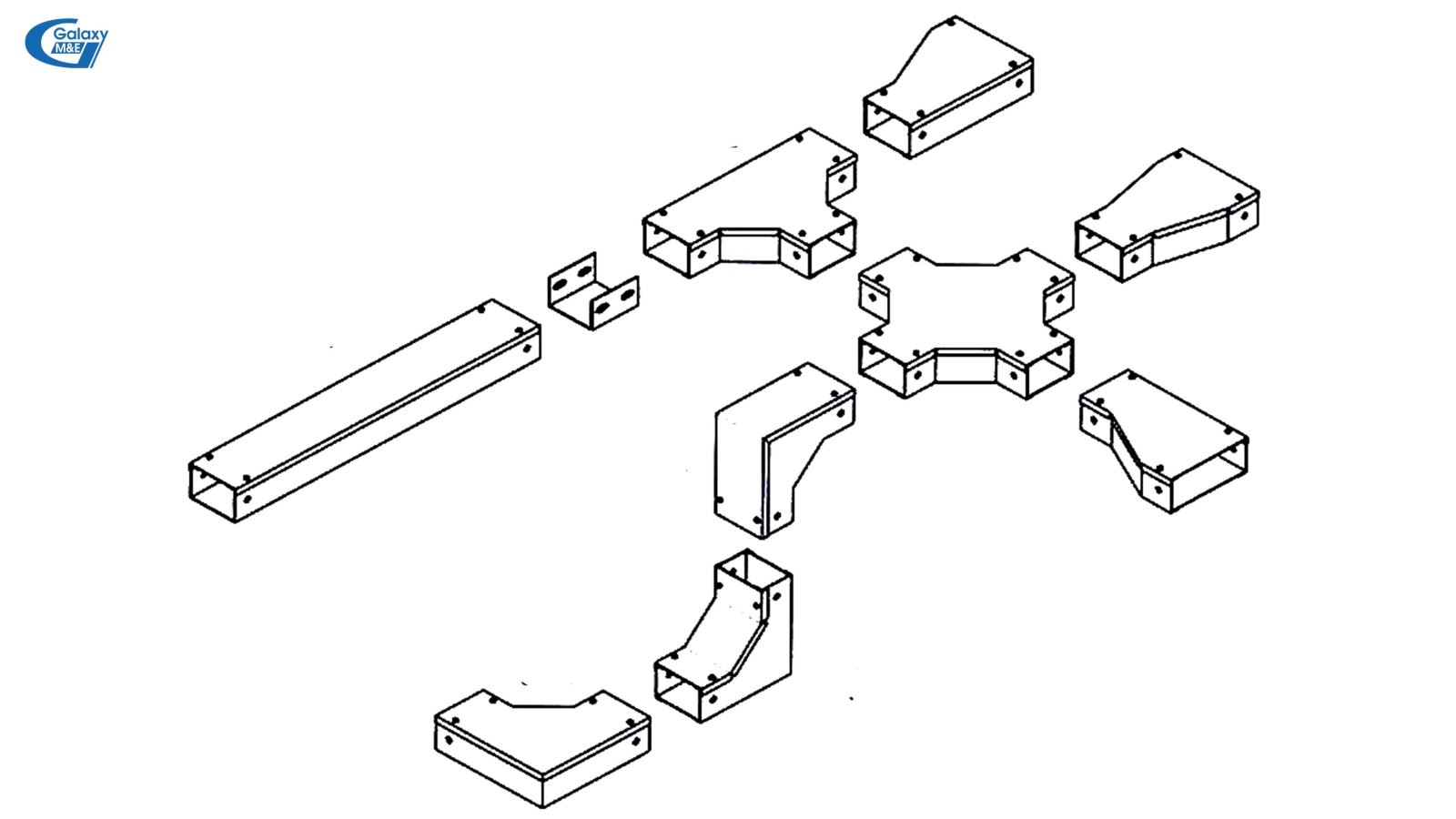
Trunking is often used for office buildings, and hotels.
1. What are ladder trays and cable trays?
Ladder trays and cable trays (also known as trunking, cable tray, ladder) is a trough used for the installation and protection of wires and cables in factories, apartments, buildings, supermarkets, medical facilities.
2. Classification of ladders - cable trays
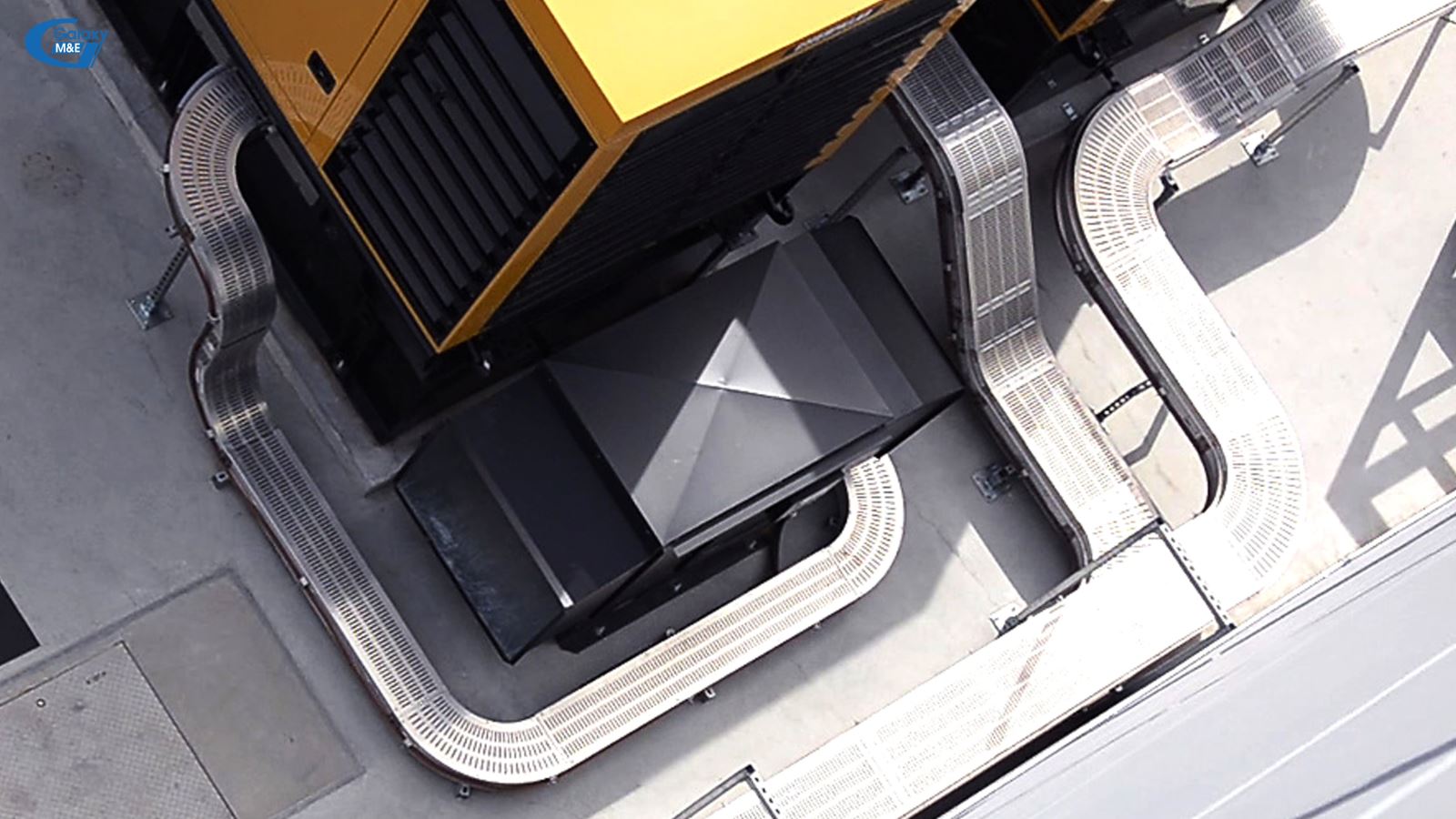
Cable trays with good heat dissipation are cheaper than trunking, suitable for projects
with large capacity devices.
2.1. Cable tray
Cable trays have 2 types (ones with hole and ones without any openings). The holeless type (trunking) is often used in buildings, and hotels. The type with openings are often used in industrial buildings. Cable tray with holes (cable tray) are used for equipment that utilizes a larger power consumption, which emits heat during use. Perforated cable tray has a top cover, but is rarely used to make a closed box, so it is easy to repair or add wires. Also because of the punched structure, it is lighter and cheaper than trunking.
Perforated cable trays are often used to take electrical cables of 50 mm2 or more with PVC sheath. With perforated cable trays, power cables are usually arranged in a layer to increase heat dissipation for the conductor.
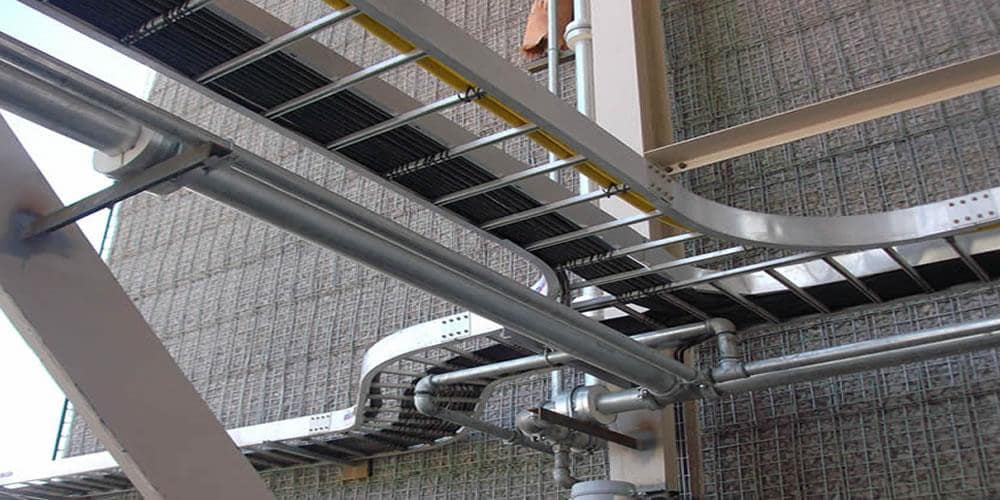
Cable ladders are often used for industrial buildings.
2.2. Cable ladder
Cable ladder (also known as electric ladder or cable ladder) has the same function as the above type, which is used for the installation of electrical wires and cables in factories, apartment buildings ...
Cable ladder is capable of withstanding heavy loads, so it is also used to support piping systems in industrial plants. Cable ladder material is usually made from corrugated iron, steel and stainless steel.
Cable ladders have the following types: Cable ladders (straight cable ladder); horizontal cable ladder (horizontal contraction); tee cable ladder (cable ladder fork); inside vertical riser cable ladder (shrink inside cable ladder); outside vertical riser cable ladder (outside vertical riser cable ladder); reducer cable ladder (reducing cable ladder) ... The division of many types of cable ladders make the construction process convenient, shorten construction time, and save space for other works.
3. Select the trays for electromechanical works
Based on the fabrication material and the outer layer of cable tray we have the following options:
- The type of hot dip galvanized cable trays are used in many different climatic conditions, but they are often found in heavy industrial projects or in harsh environments.
- The type of non-galvanized cable trays are often used for electric cables in buildings, warehouses, textile factories ...
- The cable tray is made of steel and the outer layer is made of black plastic, which increases the price of the cable tray. They are often used in the food industry and petrochemical industry.
- Each type of ladder - cable trays will have different sizes (height, width). The size of the cable tray affects the load capacity of the wiring system. The choice of the type of cable tray depends on the weight and cross-section of cable, installation terrain, and the installation environment.
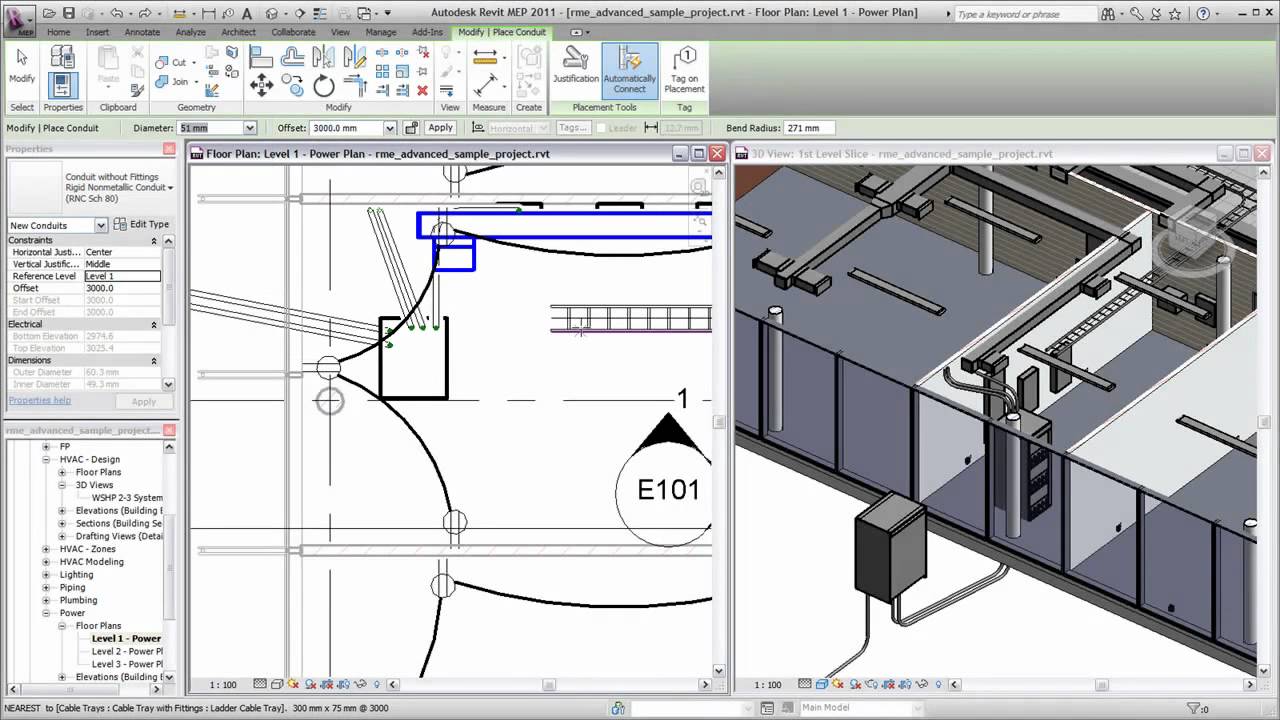
In order to have an appropriate, stable and sustainable cable-ladder (cable tray, trunking, ladder) system, it must be surveyed and designed from the beginning of the project.
4. How to choose and choose a ladder - cable tray
In order to optimize the number and types of cable trays, the mechanical and electrical construction unit needs to calculate the specific number of wires required, calculating the size of the cable ladder and the ladder that is suitable. The following parameters will assist the electromechanical design and construction unit in making an appropriate plan for the use of cable trays:
- Number of cables;
- Outside dimensions of cable;
- The cable’s allowance to bend its radius;
- Total cable weight;
- Space for installation.
5. Calculation of ladder - cable tray
- Calculate the total diameter of TOD cables = OD1 x mn + ... + ODn x m;
- Calculate the total horizontal cable installation including the distance between the TW cables = [TOD + d x (m1 + ... + mn)];
- Calculating the total cross-sectional area of cable installation including redundant TS = (TW x ODmax) x (1 + s / 100);
- Area of the cable tray cross-section needed to install SC = TS x (1 + F / 100);
- Select the cable tray ladder with available height H> ODmax, from which the available horizontal width W> SC / H is calculated;
- Calculate the radius of contraction, numbness, cross R = 10 x Odmax.
Inside:
- Dimensions in mm;
- OD: Cable diameter (including insulation and anti-jamming layers);
- OD1 ... ODn: Cable diameter of category 1 ... n;
- ODmax: Maximum diameter of cables;
- m1 ... mn: Number of category 1 cables ... n;
- d: distance between cables;
- S:% of spare space (for installing more cables later);
- TOD: Total diameter of cables;
- TW: Total horizontal cable installation including distance between cables;
- TS: Total cross-sectional area for installation of cables including provision;
- F:% of installation area 40% ÷ 60%;
- SC: Area of cross-section of cable trays needed to install cables;
- R: Radius of co, numb, cross.
6. Selection of electrical and mechanical contractors
In order to get an appropriate, stable and sustainable cable ladder system, it is necessary to survey and design right from the beginning. With the works of repairing and upgrading the electromechanical system, the consideration and selection of cable-ladder system will be more difficult because the construction depends on the terrain as well as the condition of the mechanical system in general.
However, from any angle, whether new or renovated, repaired or upgraded, each customer should consider to choose professional and qualified construction contractors.
Choosing businesses and retailers (to purchase) are more inexpensive than a mechanical and electrical contractor. The cause is provided by the construction unit itself. Besides the advantage of cost, the disadvantage is the risk of the lack of uniformity in the overall electromechanical system works. The lack of synchronization will not incur immediate costs to the investor but will cause the investor to consume costs after a period of operation.
With the experience of general contractor of many large and complex projects for U.S. and Japanese investors, Galaxy Electrical and Mechanical Joint Stock Company is confident to be sincere - transparent - and to be a dedicated friend along with all customers to build, execute, operate, and maintain sustainable electrical systems that are safe and at optimal costs.
Galaxy M&E





